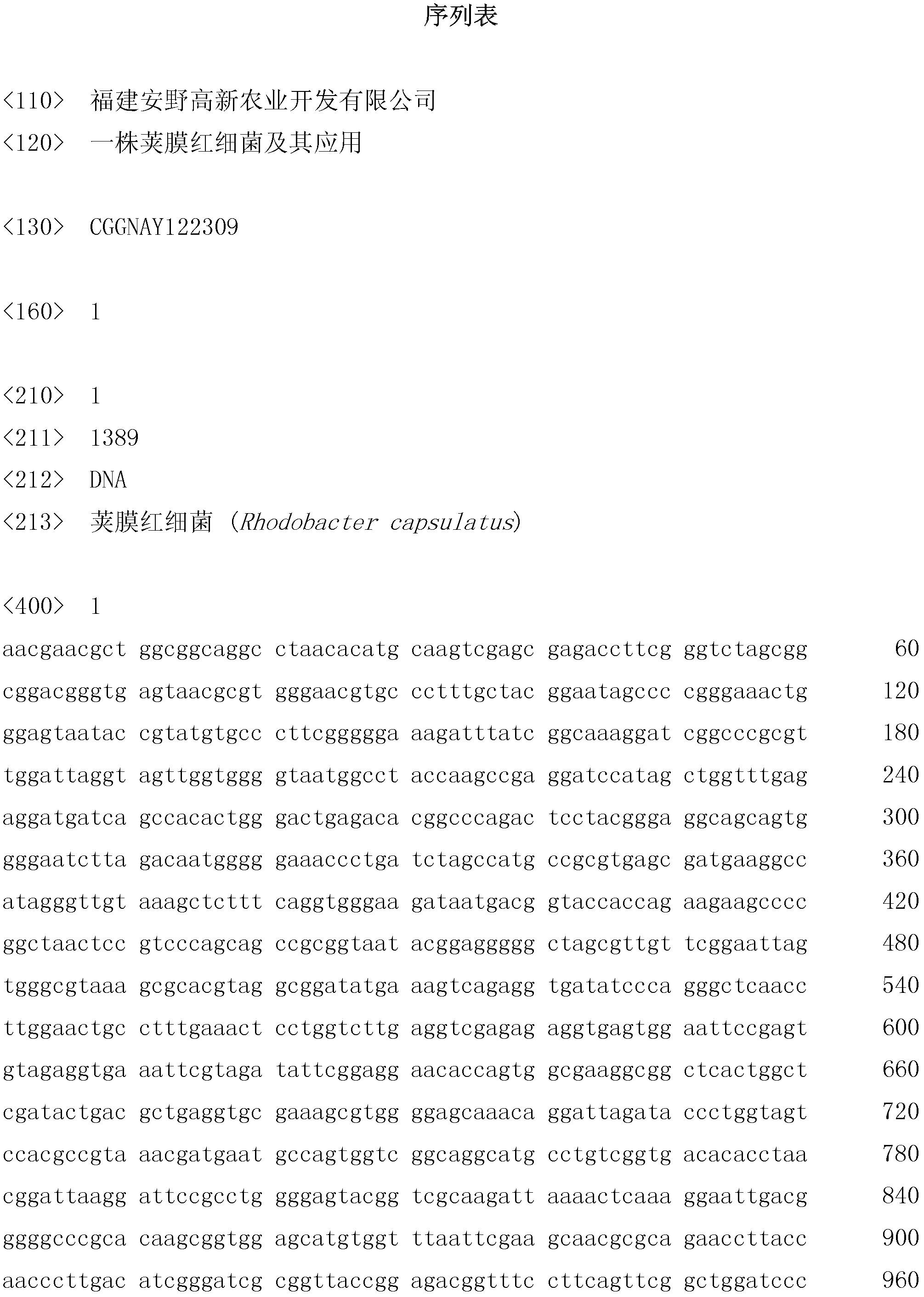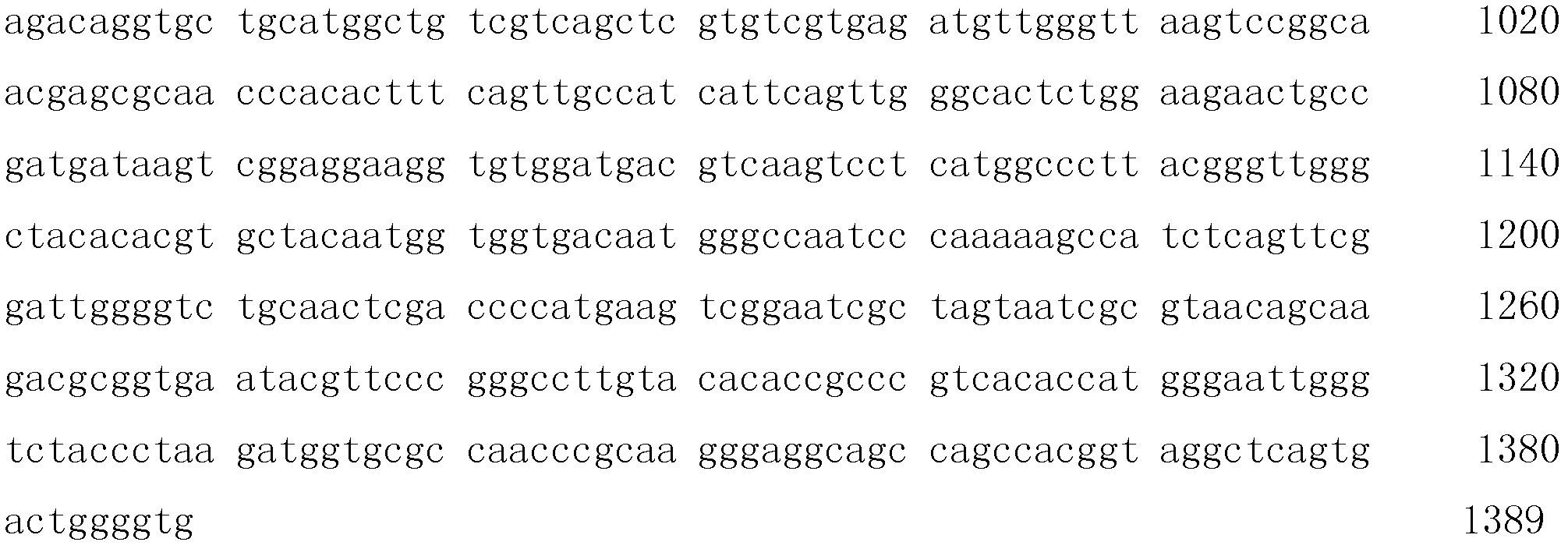Rhodobacter capsulatus and application thereof
A technology for encapsulated red bacteria and selenium inoculants, applied in the directions of application, bacteria, biochemical equipment and methods, etc., can solve the problem that the utilization rate of selenium elements cannot be guaranteed in tea leaves, and can meet the requirements of selenium supplementation health care services and improve selenium enrichment. , the effect of promoting conversion and absorption
- Summary
- Abstract
- Description
- Claims
- Application Information
AI Technical Summary
Problems solved by technology
Method used
Image
Examples
Embodiment 1
[0024] Embodiment 1, acquisition and preservation of bacterial strain AYGHJ-16
[0025] 1. Obtaining the strain AYGHJ-16S
[0026] Photosynthetic bacteria that can tolerate high concentration of sodium selenite and transform inorganic selenium into organic selenium were isolated from the bottom mud of Fuzhou West Lake by means of enrichment and selective identification culture techniques. A strain was obtained, which was named strain AYGHJ-16S. The selenium-rich amount of strain AYGHJ-16S is 150ug / ml.
[0027] 2. Identification of strain AYGHJ-16S
[0028] 1. Morphological characteristics
[0029] Gram-negative bacteria;
[0030] The bacteria are short-rod or egg-shaped, with a size of about (0.6-1.2) μm-(2.0-2.2) μm;
[0031] The colonies are smooth, round and protruding under light conditions;
[0032] Colonies are red under light conditions and colorless under dark conditions.
[0033] 2. Molecular characteristics
[0034] The sequencing result of 16S rDNA is shown ...
Embodiment 2
[0040] Embodiment 2, the optimization of the fermented components and technological conditions of capsulated rhodobacter AYGHJ-16
[0041] Through single factor and orthogonal experiments, the following medium composition parameters were determined:
[0042] Glucose is the best carbon source in the medium, and the highest biomass and selenium content can be obtained when adding 4-5%;
[0043] Peptone and urea are the compound nitrogen sources in the medium, and the addition amounts are: 0.5% peptone and 0.9% urea;
[0044] Yeast extract is an auxiliary nitrogen source in the medium, and the addition amount is 0.4%;
[0045] Sodium selenite is selected as the inorganic selenium source in the medium, and the addition amount is 120ug / mL.
[0046] Through the uniformly designed shake flask fermentation experiment, the following culture condition parameters were determined:
[0047] A 250mL shake flask was used, with a liquid volume of 120mL, a culture temperature of 28°C, a pH ...
Embodiment 3
[0049] Embodiment 3, the preparation of selenium-enriched bacterial agent
[0050] One, the preparation of selenium-enriched bacterial agent
[0051] Preparation method of fermentation medium (pH7.0): take 120mg sodium selenite, 40g glucose, 7.5g peptone, 9g urea, 5g yeast extract, 0.4g NaHCO 3 , 1g NH 4 Cl, 0.2g K 2 HPO 4 、2.0CH 3 COONa, 0.2gMgSO 4 ·7H 2 O, 2.0g NaCl and 10mL trace element solution were dissolved in distilled water and adjusted to 1000mL. The inorganic selenium concentration of the fermentation medium was 120mg / L. In practical applications, the pH of the fermentation medium may be 6.7-7.2.
[0052] The fermentation medium was sterilized at 115 °C for 20 min.
[0053] The preparation method of trace element solution: take 0.5g H 3 BO 3 , 400mg MnSO 4 , 60mg ZnSO 4 ·7H 2 O, 180mgNaMoO 4 2H 2 O and 10mg Ca(NO 3 ) 2 2H 2 O, dissolved in distilled water and adjusted to 250mL.
[0054] A 200L fermenter was adopted, and the fermenter was modified...
PUM
 Login to View More
Login to View More Abstract
Description
Claims
Application Information
 Login to View More
Login to View More - R&D
- Intellectual Property
- Life Sciences
- Materials
- Tech Scout
- Unparalleled Data Quality
- Higher Quality Content
- 60% Fewer Hallucinations
Browse by: Latest US Patents, China's latest patents, Technical Efficacy Thesaurus, Application Domain, Technology Topic, Popular Technical Reports.
© 2025 PatSnap. All rights reserved.Legal|Privacy policy|Modern Slavery Act Transparency Statement|Sitemap|About US| Contact US: help@patsnap.com


